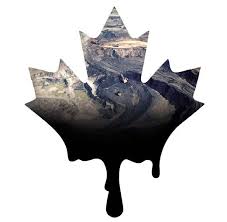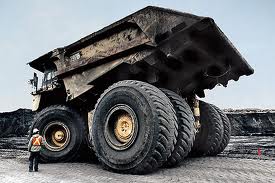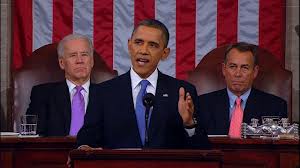 Congratulations! We are finally out of this election cycle and all the negative ads. And no matter who the winner is, I hope that we can all come together to build a stronger economy and a healthier society. While we wait for the mudslinging over the fiscal cliff to begin, here are the top four recommendations on climate change policy for the incoming (or returning) president as stated in Businessweek.
Congratulations! We are finally out of this election cycle and all the negative ads. And no matter who the winner is, I hope that we can all come together to build a stronger economy and a healthier society. While we wait for the mudslinging over the fiscal cliff to begin, here are the top four recommendations on climate change policy for the incoming (or returning) president as stated in Businessweek.
1) Put a price on carbon. I alluded to this in a previous post called Carbon Emission where we discuss the differences between a carbon tax and a cap-and-trade policy. Businessweek says that “A $20-per-ton carbon price—collected as a tax or by auctioning carbon allowances—would raise on the order of $100 billion per year while creating powerful economic incentives to curb pollution in the most cost-effective manner (and develop new technologies to do so). A carbon price is also an ideal way to help address the coming “fiscal cliff”: Using some of the revenue to pay for lower taxes on labor or capital would provide a double dividend by reducing distortions in our tax system. For that reason, a carbon price enjoys broad support from economists across the political spectrum, from N. Gregory Mankiw, Douglas Holtz-Eakin, and Arthur Laffer on the Right, to Paul Krugman, Joseph Stiglitz, and Jeffrey Sachs on the Left.”
2) Cut Non-CO2 Greenhouse Gases. CO2 is obviously the biggest contributor to global warming, accounting for over 80% of GHG’s, but it is not the most potent. Other GHG’s such as Methane, Nitrous Oxide, and other flourinated gases such as hydrofluorocarbons, perfluorocarbons, and sulfur hexafluoride are numerous time more potent warmers than CO2. I wrote a paper on this earlier this year and will post it later this month. Needless to say, focusing attention on these High Global Warming Potential gases may do more in the short-term to curb warming and create some international “good will” for tackling the CO2 problem.
3) Promote Clean Energy and Energy Efficiency. The administration should further the transition to renewable energy sources by removing subsidies for fossil fuels and encouraging smarter subsidies for clean energy. I wrote extensively on this subject here. In short, current subsidies to fossil fuels should be removed and invested into R&D. The current subsidies in place for renewable energy promote widespread deployment of these technologies, but do nothing to increase their output and reduce their cost. A better subsidy policy would promote increases in efficiency or reductions in cost in order to make these technologies competitive with cheap and abundant natural gas. After all, the taxpayer wants to see results from their money.
4) Use the Clean Air Act. Finally, the new administration should take full advantage of the Clean Air Act that sets new vehicle mileage standards, sets limits on pollution from industrial sources, and sets more protective standards for air quality. “The next administration should build on these steps by setting carbon-pollution emission standards for stationary sources, including new and existing power plants. In doing so, the EPA can draw on a proud tradition, dating back to the Reagan administration, of making clean-air rules as economically efficient and flexible as possible—for example, by allowing averaging and trading so companies can meet standards on a fleet-wide basis rather than at each facility individually. The EPA should also design the carbon standards in a way that rewards states that implement their own rigorous programs—such as the innovative cap-and-trade approaches already in use in the Northeast and getting under way in California.”
There you have it. In only a few hours from now we will know the next leader of the United States of America. Now if the time for action on climate change. The four steps outlined above are only the beginning, but they will help to reduce our dependence on fossil fuels, improve the health of our citizens (and the other 6.7 billion citizen of this planet), and even provide opportunities for the growth of new industries. This is a tall order, but we have never backed down from a challenge before, why start now?
 I read a quick article in Bloomberg Businessweek last week that detailed an unlikely alliance between tar sands producers and environmentalists to put a pollution tax on the dirty, heavy crude coming out of Alberta. Yes, that is correct. Tar sands producers are actually lobbying for a carbon tax or cap-and-trade system that would help to clean up their operations. In British Columbia, a province that enacted a carbon tax, families are paying an average annual premium of $376 and have reduced their per capita emissions 10%. The producer’s biggest fears are to be viewed as “too polluting” by other nations, resulting in no market for their exports. America’s opposition to the Keystone XL pipeline highlights this fear. Unless the tar sands can change their appearance, it seems that the world would be okay without the product. An oil industry spokesman even said that “If your country looks at Canada and says your energy exports are too carbon intensive, then it becomes and economic competitiveness issue.”
I read a quick article in Bloomberg Businessweek last week that detailed an unlikely alliance between tar sands producers and environmentalists to put a pollution tax on the dirty, heavy crude coming out of Alberta. Yes, that is correct. Tar sands producers are actually lobbying for a carbon tax or cap-and-trade system that would help to clean up their operations. In British Columbia, a province that enacted a carbon tax, families are paying an average annual premium of $376 and have reduced their per capita emissions 10%. The producer’s biggest fears are to be viewed as “too polluting” by other nations, resulting in no market for their exports. America’s opposition to the Keystone XL pipeline highlights this fear. Unless the tar sands can change their appearance, it seems that the world would be okay without the product. An oil industry spokesman even said that “If your country looks at Canada and says your energy exports are too carbon intensive, then it becomes and economic competitiveness issue.” Standing in the way of this unlikely alliance and subsequent carbon pricing is the Prime Minister Stephen Harper. Harper has traditionally emphasized business and job creation over environmental issues and is responsible for pulling Canada out of the Kyoto Protocol, the only nation to do so. Failure to embrace cleaner regulations on the tar sands may soon become an environmental and economic problem for The Great White North.
Standing in the way of this unlikely alliance and subsequent carbon pricing is the Prime Minister Stephen Harper. Harper has traditionally emphasized business and job creation over environmental issues and is responsible for pulling Canada out of the Kyoto Protocol, the only nation to do so. Failure to embrace cleaner regulations on the tar sands may soon become an environmental and economic problem for The Great White North. The winds of change are blowing, and nations are figuring out how to monetize carbon. If Canada can enact sensible regulation that appeases both oil producers and environmentalists, then it can be a leader in the carbon markets. If it fights the winds of change, then it risks being left behind by the rest of the world. The simple answer is to put a price on carbon and use the proceeds to invest in clean technology developments.
The winds of change are blowing, and nations are figuring out how to monetize carbon. If Canada can enact sensible regulation that appeases both oil producers and environmentalists, then it can be a leader in the carbon markets. If it fights the winds of change, then it risks being left behind by the rest of the world. The simple answer is to put a price on carbon and use the proceeds to invest in clean technology developments.



